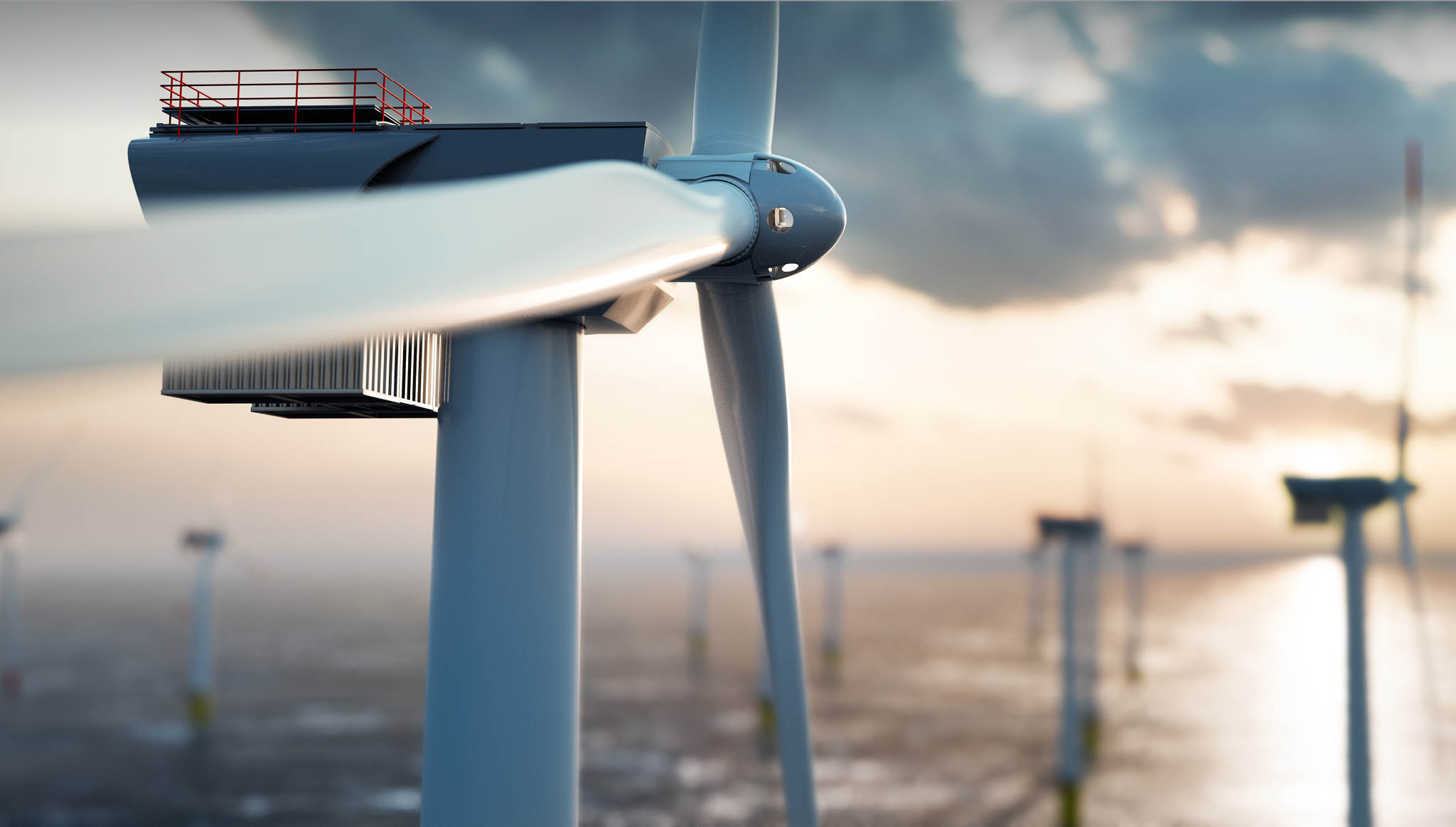Energy hubs (also known as smart energy systems or energy clusters) are centralized nodes that integrate various sources, storage tech, and consumers into a coherent and efficient network. These hubs facilitate the seamless transfer and optimization of energy flows for a more sustainable and resilient energy infrastructure.
At the heart of energy hubs lies the principle of sector coupling. Sector coupling enables the connection and integration of electricity, heating, cooling, production, and transportation. By combining these traditional silos, excess energy from renewable sources such as solar and wind can be efficiently stored, distributed, and used across multiple applications. This, in turn, simultaneously maximizes the system’s overall efficiency, reduces costs for consumers, and accelerates the transition toward renewables.
The true power of integrated energy systems lies in the synergistic interaction among various elements of renewable energy production and off-taker options in the region, all within a predominantly oil and gas supply chain. The result is a more managed and responsible transition toward these renewable sources—which is why energy hubs are needed. They serve as coordination centers, seamlessly connecting distinct components to enable dynamic energy routing, usage, and storage. Not to mention the additional value streams that such integration fosters. Excess renewable electricity can, for example, be used to produce green hydrogen through electrolysis. That hydrogen can then become an energy carrier or feedstock for various sectors including transportation, industry, and heating, or it can be stored underground using the subsurface knowledge of oilfield engineers.
It’s an energy system’s level of integration that decides its flexibility, resilience, and sustainability. The more integrated it is, the more it unlocks new economic opportunities and enables our transition to a carbon-neutral future.
Overcoming the challenges of energy system integration
To scale energy hubs, continuous research and development, supportive policies, and collaborative partnerships between traditional oil and gas, new energy players, and the wider supply chain are crucial. Certain tech advancements, coupled with favorable market conditions, can accelerate the widespread development, deployment, and integration of renewable energy solutions into such hubs, thereby improving the resilience and energy security of the regions they serve.
- Digitalization and data analytics: The performance of energy hubs relies on robust data management, analytics, and decision support systems. Advanced data analytics tools can optimize energy flows, predict energy demand and supply patterns, and enable effective energy trading and pricing. In addition, artificial intelligence and machine learning algorithms can enhance the performance and efficiency of integrated energy systems by optimizing operations and predicting maintenance needs, thereby reducing consumers’ cost per unit of energy.
- Interoperability and standardization: The seamless integration of different renewable energy tech, storage systems, and communication networks within a predominantly oil and gas supply chain requires interoperability and standardization. Developing common protocols and standards for data exchange, communication interfaces, and equipment interoperability enables effective integration and collaboration among diverse stakeholders.
- Renewable energy tech: Continued advancements in renewable energy are necessary to enhance the tech’s efficiency, reliability, and cost effectiveness. Innovations in solar photovoltaics, wind turbines, lithium battery alternatives for storage, and other renewable energy tech drive hub growth and scalability.
- Energy storage: Efficient energy storage solutions are crucial for managing the intermittent nature of renewable energy sources. Advancements in battery tech (including nonlithium and flow batteries) can enhance energy storage capacity, durability, and affordability. Additionally, exploring emerging tech like hydrogen, compressed air, and advanced thermal systems can provide long-duration and large-scale storage capabilities. Underground storage offers unique advantages in availability and cost effectiveness, especially in mature oil and gas basins around the world.
- Hydrogen and power-to-X tech: Hydrogen plays a crucial role in decarbonizing various sectors such as transportation and industry. Further developments in its production, storage, and distribution are necessary for integrating hydrogen into renewable energy hubs. Power-to-X tech including electrolysis for hydrogen and synthetic fuel production can enable converting excess renewable energy into valuable energy carriers or feedstocks.
- Interconnection and transmission: Building robust transmission infrastructure and interconnections is crucial for scaling the renewable component of energy hubs toward a low-carbon future. High-voltage direct current (HVDC) transmission lines and grid interconnectors enable the long-distance transmission of renewable energy, linking remote generation sites with demand centers. Advancements in HVDC tech—including increased capacity and efficiency—can support the integration of geographically dispersed renewable resources.
- Electrification and demand-side management: Promoting electrification across sectors (e.g., transportation and heating/cooling) is crucial for future energy hubs to shift their region’s dependence away from oil and gas toward renewables. Advancements in electric vehicle tech, charging infrastructure, and smart appliances call for the integration of renewable electricity into different applications. Additionally, demand-side management tech such as smart meters and energy management systems encourage the efficient utilization of energy, load balancing, and demand response programs.
- Grid flexibility and demand response: Enhancing the flexibility and demand response capabilities of the electricity grid is vital for integrating renewable sources into energy hubs. This includes enabling demand-side management, promoting flexible consumption patterns, and implementing tech that enables grid operators to balance supply and demand in real time. Grid flexibility measures such as grid-scale energy storage, demand-side response systems, and grid interconnections will support the development of renewable energy hubs at scale.
The case of offshore wind farms
One prime area for energy hub development is offshore wind farms. Offshore wind power has emerged as a prominent player in the renewable energy landscape as the world intensifies its efforts to transition toward sustainable sourcing. Why is this significant? Because offshore wind farms surface a significant challenge solved by integrated energy systems: renewable energy curtailment. Renewable energy curtailment refers to the deliberate reduction or restriction of renewable energy output—despite its availability—due to grid constraints or low demand. This often occurs when the supply of renewable energy exceeds the capacity of the grid or when electricity demand is low, leading to a wastage of valuable clean energy resources.
As a source of electricity, offshore wind farms face unique curtailment challenges compared to onshore wind or solar projects. The primary reasons for curtailment in offshore wind are related to grid limitations, grid stability concerns, and the intermittent nature of wind resources.
Various strategies and solutions can be implemented to unlock the full potential of renewable energy and minimize curtailment. One of those solutions, as mentioned above, is leveraging an integrated energy system. Simultaneously integrating offshore wind farms with other renewable energy sources (e.g., solar photovoltaics or onshore wind farms) and existing oil and gas supply chain infrastructure can help balance the intermittent nature of offshore wind generation. This integration enables a more diversified and reliable renewable energy mix by reducing curtailment, optimizing resource utilization, and increasing both the resilience and assurance of energy supply.
Several other strategies for reducing curtailment exist. At a high level, these include:
- Power-to-X applications: Power-to-X tech such as power-to-hydrogen or power-to-gas can convert excess offshore wind energy into alternative energy carriers. These applications allow for the production of hydrogen or synthetic natural gas, which can be stored, transported, and utilized when needed, thereby reducing curtailment.
- Energy storage tech: Existing solutions such as batteries and hydrogen storage (especially underground) can mitigate curtailment by capturing excess offshore wind power during periods of low demand. These stored energy resources can then be discharged during high-demand periods, ensuring a more efficient utilization of the generated electricity.
- Advanced grid management: Systems built on real-time monitoring, forecasting, and demand response mechanisms can enhance grid flexibility and enable better integration of offshore wind energy. They’re proven to help match electricity generation with demand—again, reducing the need for curtailment.
Take the United Kingdom as an example
Europe and the UK have demonstrated a strong commitment to renewable energy, the development of energy hubs, and the implementation of supportive tech and regulations. This has positioned the UK as a leader in the global clean energy transition. Their particular focus? CCUS, low-carbon hydrogen production, and offshore wind power. In fact, the nation boasts the largest installed offshore wind capacity, in close proximity to the largest offshore oil and gas infrastructure, globally.
They recognized the tremendous synergies, and decided the best way to maximize that potential is through an integrated energy hub. In Aberdeen, for example, the Net Zero Technology Centre (NZTC) has taken on the role of integrator, responsible for distributing the Energy Transition Fund. The group is also leading several consortiums of stakeholders tasked with developing a national wind-to-green-hydrogen model for Scotland—a perfect opportunity for the kind of integrated energy system described thus far.
Here’s how it works:
- The stakeholders design a development concept including renewable generation, transmission, storage, electrolyzers, pipelines, transmission cables, and export routes.
- Energy flows for that concept are then simulated using historical weather data.
- An optimizer enables all upstream, midstream, and downstream components to be selected, built, sized correctly, scaled, and integrated to deliver the lowest overall system costs.
Now, reducing electricity and hydrogen costs is key to maximizing system value and making the economic case for a concept. That’s the beauty of digital tools such as integrated system modeling: they enable thorough screening and selection of renewable energy strategies. This is why integrated energy systems are currently at the forefront of the energy transition. They revolutionize the way we generate, store, use, and distribute energy. Through energy hubs, offshore wind, and CCUS tech, this transformation enables renewable energy to be more efficiently integrated, emissions to be reduced, and system efficiency to be optimized.
In short, we must embrace a collaborative and holistic approach if we wish to unlock our sustainable and resilient energy future faster—if we wish to combat climate change while meeting growing energy demands.




